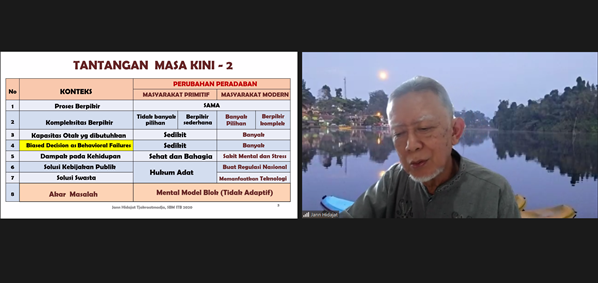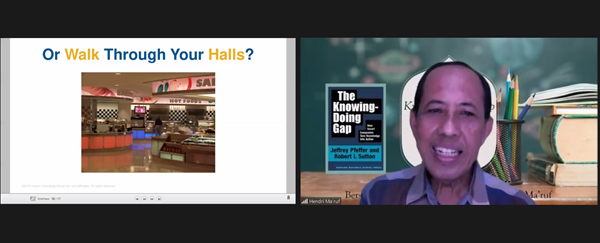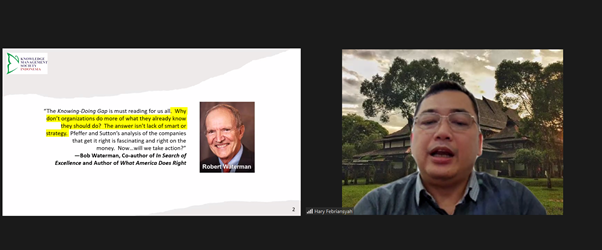The Indonesian Knowledge Management Society (KMSI) has again conducted an online book review. This Friday (19/08/2022), the book reviewed is The Knowing-Doing Gap: How Smart Companies Turn Knowledge into Action, an old book published in 1999 by Jeffrey Pfeffer and Robert Sutton.
This book is increasingly relevant today. Pfeffer and Sutton use many case examples to explain how to deal with the gap between action and knowledge.

According to Jann, a changing civilization increases the complexity of the problem. Thus, new knowledge is required to overcome it. However, this knowledge is often not found.
For example, the climate problem is never-ending, but the existing knowledge is not yet sufficient. Because of this complexity, the workload of the human brain and thought processes becomes increasingly heavy. Humans are increasingly irrational and suffer for their wrong decisions. “There are so many problems that arise because we cannot explore,” said Jann Hidajat.
The second contemporary challenge, according to Jann, is that there are many choices and demands for complex thinking. This greatly impacts life, public policy, and the private sector. This is rooted in the mental block model.
Quoting Bob Waterman, Jann said, why don’t organizations take more action when they know they need to? The answer is not a lack of intelligence or strategy.

Third, action is of great value compared to a great plan or concept that is not executed. Fourth, take advantage of mistakes in action as a learning process. Fifth, keep fear away in order to encourage optimal performance.
Sixth, compete with other organizations, not with work colleagues. Seventh, measuring and assessing important and relevant things. Finally, leaders need to ensure that their time, energy, and thoughts are used properly, namely by building the systems that facilitate the transformation of knowledge into action.
This book review is not one-way. Participants also shared their experiences in managing knowledge into real actions in organizations. From these stories, it is concluded that transforming knowledge into action is challenging for many people.





